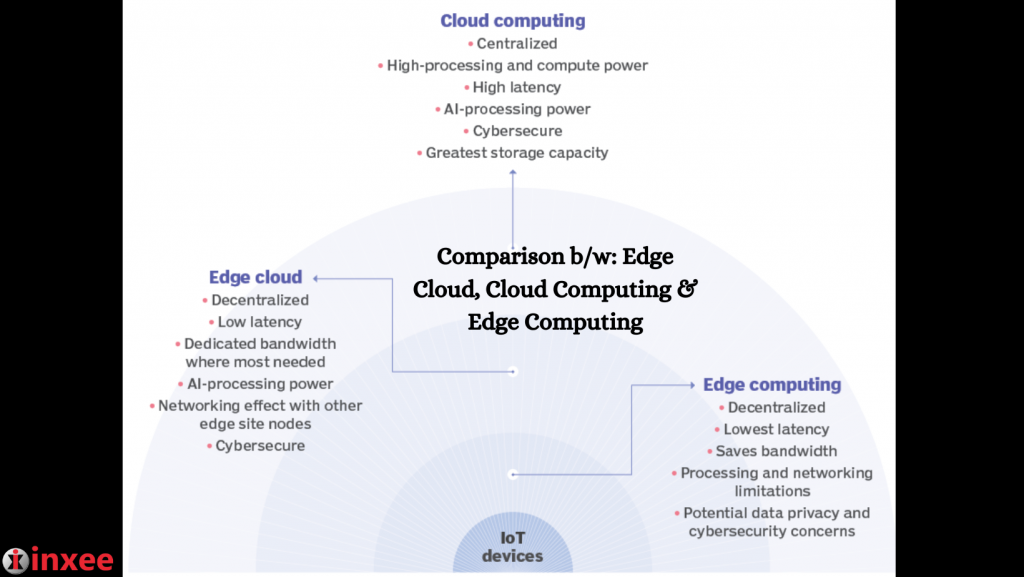Comparison b/w: Edge Cloud, Cloud Computing & Edge Computing
Edge cloud, cloud computing, and edge computing are distinct models with different strengths and use cases.
Cloud computing refers to the delivery of computing resources, such as storage and processing power, over the internet. It centralizes data and applications in large data centers, providing scalability and accessibility from anywhere. Cloud computing is suitable for applications that require extensive computational power, massive storage, and global accessibility. It offers cost-efficiency, easy maintenance, and the ability to handle high traffic loads.
Edge computing, on the other hand, involves processing and analyzing data closer to the source, typically at the edge of the network. It reduces latency and bandwidth usage by performing computations locally. Edge computing is ideal for time-sensitive applications, real-time analytics, and IoT devices that generate large volumes of data. It enhances response times, reduces network congestion, and improves reliability in scenarios with limited connectivity.
Edge cloud combines elements of both edge computing and cloud computing. It leverages distributed cloud infrastructure closer to the edge, offering the benefits of cloud computing while enabling low-latency processing at the network’s edge. Edge cloud provides a balance between centralized cloud resources and localized computing, allowing for improved performance, reduced data transfer, and increased privacy.
The best model depends on specific requirements and use cases. Cloud computing is suitable for scalable and globally accessible applications, while edge computing excels in latency-sensitive and edge device-intensive scenarios. Edge cloud offers a hybrid approach, providing the benefits of both models. Organizations should consider factors such as data sensitivity, network requirements, latency, scalability, and cost-effectiveness to determine the most suitable model for their specific needs.










Leave a Reply